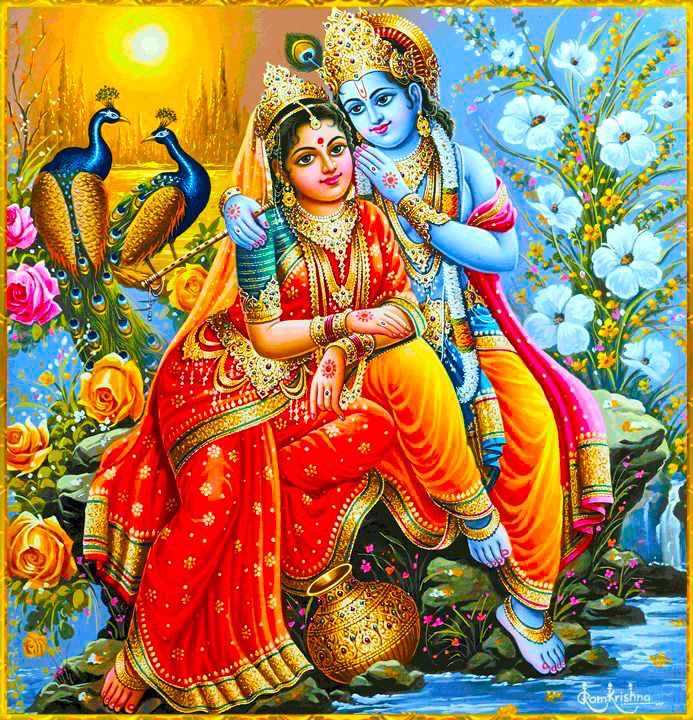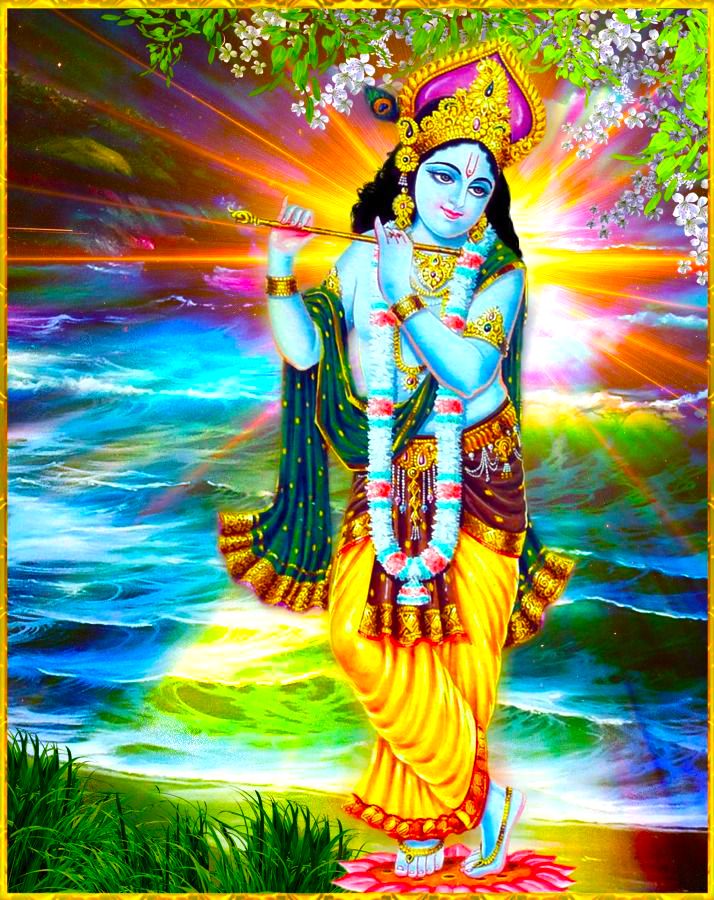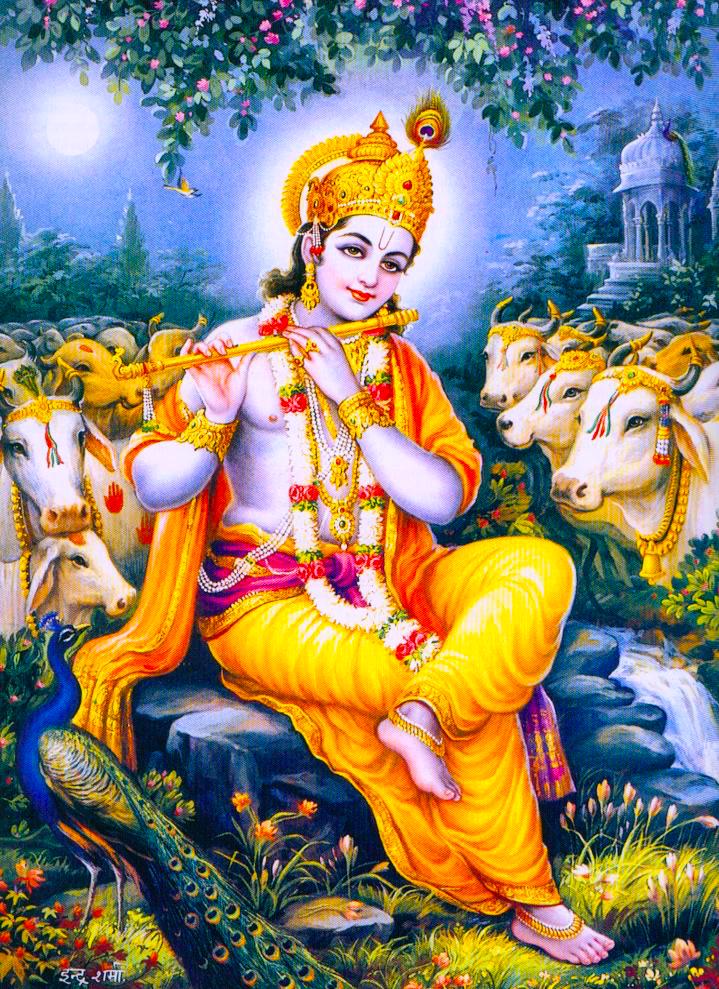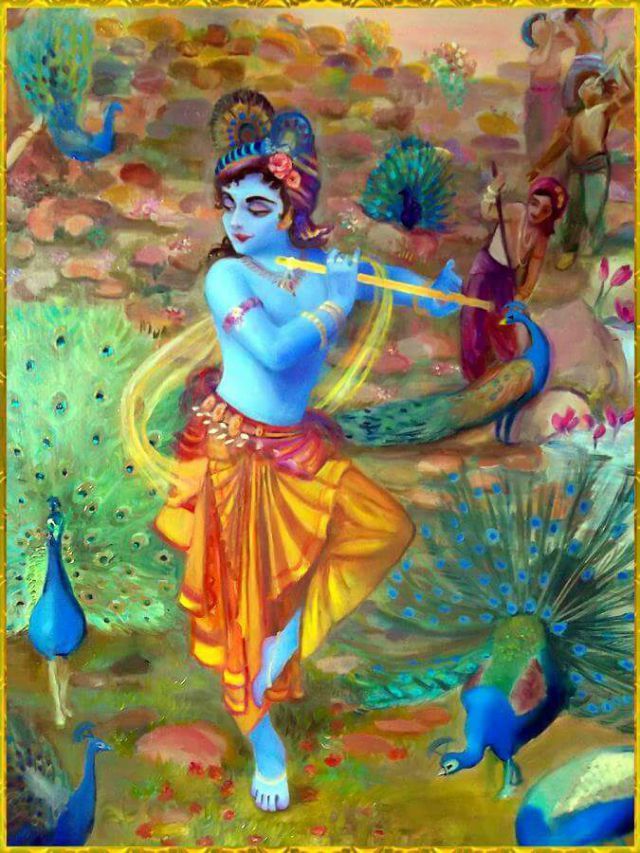Mahanidhi Madan Gopal Das
In the material world, both neophyte sadhakas and realized suddha-bhaktas chant the holy name. Dutiful beginners chant Hare Kṛṣṇa as a sadhana for purification, whereas adepts relish the sweetest nectar in the holy name. Chanting the Hare Kṛṣṇa maha-mantra is the eternal activity of every soul. Therefore, it is good to cultivate attachment and affection for one’s eternal companion–Kṛṣṇa’s holy names.
Harinama sankirtana goes on in the spiritual world as well among Kṛṣṇa’s eternal associates. The scriptures narrate many pastimes of Kṛṣṇa and His devotees chanting the holy names.
“Kṛṣṇa said to Uddhava, ‘Mother Yasoda is always singing My names in a deep mood of separation. As she takes long slow breaths, the sound “Ha Kṛṣṇa! Ha Kṛṣṇa!” comes from her throat. Profuse perspiration soaks her weary body, and tears gush from her eyes, soaking her clothes, as she stares intently at the road to Mathura waiting for My return.’ ” (Uddhava-sandesh)
“A sakhi tells Kṛṣṇa, ‘O Kṛṣṇa! When You are out tending the cows in the pasture, Radharani spends Her day, longing to see You again. Fixing Her eyes on the path where You will return with the cows, She engages Her tongue in repeating the two syllables kṛṣ and ṇa. Radhika’s ears yearn to hear the sound of Your flute, and Her heart is fixed in the happiness of thinking of You.’ ” (Ujjvala-nilamani ch.15)
“Kṛṣṇa said, ‘Hey Kundavalli! When I accidentally said the word “Radha”, Candravali became tortured with pain, as if violently wounded at heart. However, in order to pacify My embarrassment and bewilderment, she doubled the smile on her lotus face and spoke words filled with sweetness.’ ” (Ujjvala-nilamani ch.14)
“Vrnda-devi said to Paurnamasi, ‘Radharani gave a farewell embrace to the budding jasmine creeper She had planted on the Yamuna’s shore. She placed the farewell gift of Her very beautiful diamond necklace in Lalita’s hand. Radhika then entered a kadamba grove filled with buzzing sounds of bees and fainted. But She was reawakened by Her priya-sakhis chanting the name of Hari.’ ” (Ujjvala-nilamani ch.15)
“The wonderful sacred mantra Kṛṣṇa chants is the name of His dearmost Radharani. Srimati Radharani’s maha-mantra is the name of Lord Kṛṣṇa.” (Radha-Kṛṣṇa Ganoddesa-dipika)
An excerpt from the book Art of Chanting




